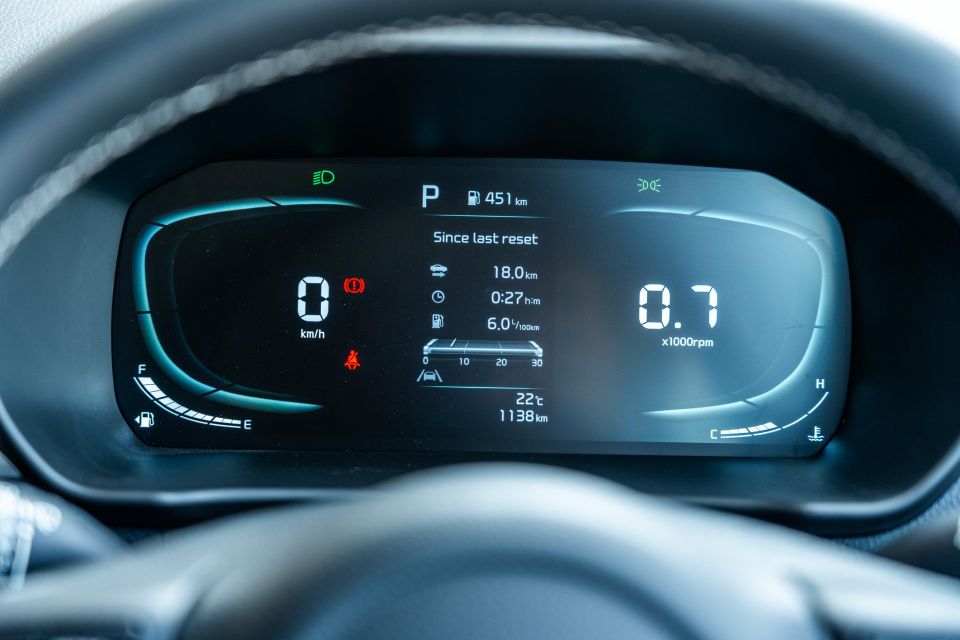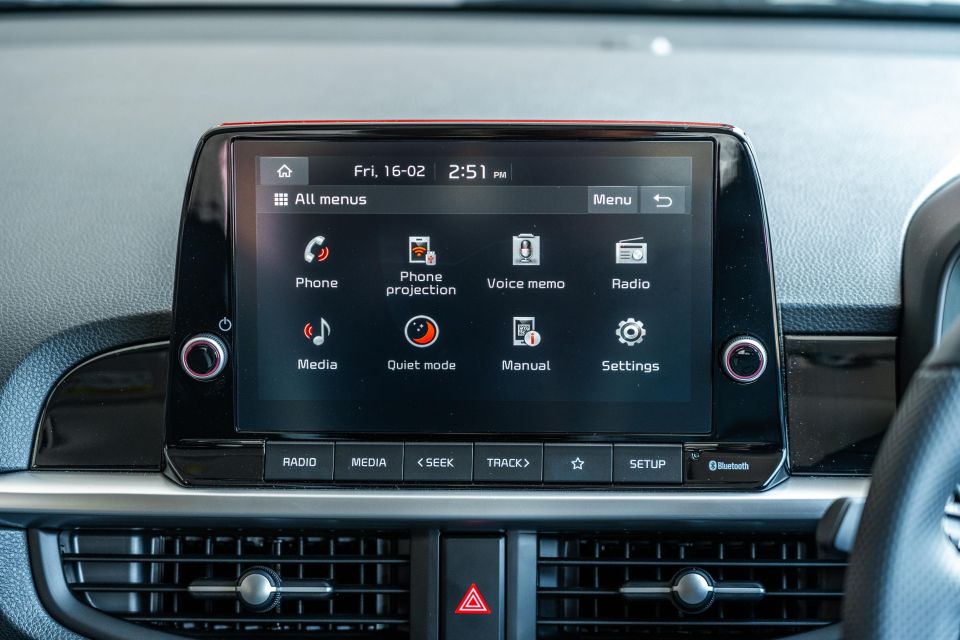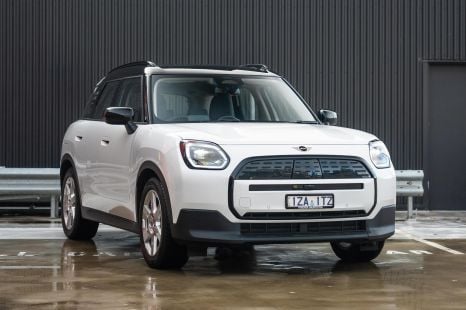

Max Davies
2025 Skoda Superb Sportline review
2 Months Ago
Kia Australia's baby city car has grown up a bit for 2024. We'd still be opting for the base model, rather than the GT-Line though...



Quickly see how this car stacks up against its competition. Select any benchmark to see more details.
Where expert car reviews meet expert car buying – CarExpert gives you trusted advice, personalised service and real savings on your next new car.
The Kia Picanto has lost its title as Australia’s cheapest new car for now, but it’s back for 2024 with a new look and more technology.

This tiny hatchback is a big deal in Australia, having dominated the sales charts and proved it’s possible to sell small, cheap hatchbacks in the face of most rivals disappearing.
Its importance for Kia is growing, too. The long-running Rio is dead, leaving the Picanto to fight the wildly popular MG 3 alone.
Kia is gearing up for a fight. The new Picanto has an angry new look which takes inspiration from the EV9 and Sorento, and its cabin features an updated infotainment system.

There’s also new safety equipment, which will no doubt endear the Picanto to parents looking for an affordable first car option.
Should you look at the base model, or the fancy GT-Line on test here?
There’s a lot more standard safety equipment in the updated Kia Picanto, but it comes at a price.

2024 Kia Picanto pricing:
Prices exclude on-road costs unless otherwise noted
To see how the Picanto compares with its rivals, use our comparison tool.
The cabin of the Picanto remains simple but well thought out behind the wheel.

Although it’s tiny on the outside (it’s only 24mm longer than a Fiat 500), the driving position up front is actually surprisingly accomodating for big bodies.
At 6’7 I was able to get comfortable behind the wheel, although it’s not as comfortable as even a slightly bigger car like the Stonic SUV.
Facing the driver is a lovely, sporty steering wheel, and the simple digital dashboard from low-end versions of the Sportage SUV. With large speed and rev readouts, it’s easy to make out on the move without feeling particularly special.


That theme extends to the rest of the interior.
With manual air-conditioning dials, lots of hard plastics, and throwbacks like the ‘80s Mercedes-style stepped gate on the automatic shifter, it feels like an economy car… which it is, but which also isn’t really in keeping with the GT-Line branding.
It begs the question of why you wouldn’t just buy the base model, which is fundamentally the same inside but just lacks a few superficial trim pieces.
Regardless of which model you opt for, you get a 7.0-inch touchscreen infotainment system with wireless Apple CarPlay and Android Auto.


Like the digital dashboard, it’s simple to look at but ultimately effective.
There’s very little learning curve here; we’d wager most owners will connect up their phone and never spend much time interacting with the native software.
Storage up front is solid, despite the car’s diminutive proportions. You get two cupholders at the base of the dash, along with a shelf that’s perfect for a smartphone or wallet.
There’s also a proper central armrest, which isn’t always a given in economy cars, and usable door pockets.

The rear seats are usable for kids, or for adults on shorter trips.
Headroom back there is genuinely good thanks to the boxy body, but there’s minimal legroom unless the driver is squeezed right up against the dashboard.
ISOFIX points feature on the outboard rear seats, and there’s a trio of top-tether points for child seats – not that we’d expect too many people being keen to regularly use the Picanto as a family car.
There are no air vents back there, nor is there a fold-down central armrest.


Boot space is 255 litres, which is enough to swallow a couple of overnight bags or a large supermarket shop.
There’s a significant load lip, and the boot space itself is quite deep. That means you’ll have to lift heavy items and up and into the cabin, rather than sliding them in as you’re able to in bigger cars.
Following the discontinuation of the Picanto’s 1.0-litre three-cylinder turbo engine with the facelift, the entire range is now only available with a 1.25-litre four-cylinder naturally aspirated engine.

| Model | Kia Picanto GT-Line |
|---|---|
| Engine | 1.25L 4cyl petrol |
| Power | 62kW |
| Torque | 122Nm |
| Transmission | 4-speed auto |
| Driven wheels | Front-wheel drive |
| Weight | 993kg (tare) |
| Fuel economy (claim) | 6.0L/100km |
| Fuel economy (observed) | 7.5L/100km |
| Fuel tank size | 35 litres |
| Fuel requirement | 91 RON |
To see how the Picanto compares with its rivals, use our comparison tool.
With a small, naturally aspirated petrol engine and a four-speed slush box, the Picanto is decidedly old-school.

Even in city driving it feels as though it’s working hard, revving to 3500rpm in first gear even when you want to accelerate gently, and it makes a coarse and raspy noise.
It’s far from unbearable, but it also stands out in the age of effortless turbocharged performance.
If you’re willing and able to drive a manual car, the five-speed option at least gives you more gears to play with, and more control over which one you’re in at any given point.
Given Kia killed the turbocharged Picanto GT because it was only available with a manual though, we’d wager most buyers will opt for the four-speed automatic on test here.

With light steering and a tiny footprint, the Picanto does its best work in town.
It’s a piece of cake to thread through tight spaces, slipping into small parking spots that’d have a Seltos stumped without room to spare, and the boxy window line offers excellent all-round visibility.
Ride quality is generally pretty good on the 16-inch wheels, which are tiny by 2024 standards.
The Picanto keeps most of the fiddly bumps on city roads out, but the suspension can be noisy when you slap into sharper potholes, and you’re aware of how short the wheelbase is over speed bumps.

It’s perfectly acceptable given the price and the car’s size. At highway speeds the little engine is working hard, revving between 3000 and 4000rpm.
Wind and road noise are noticeable at 100km/h, and when you put your foot down at speed it needs to kick down and rev hard. It’s not a natural highway cruiser, but it’s a capable one given its size.
Although it doesn’t have adaptive cruise control, you do get lane-keeping assist with active lane-centring. They come in handy on longer trips, nudging you back between the white lines if you stray.
The lane-centring can be a bit too hands on at times, trying to wrest control away from the driver. Some members of our team love it, but I am not one of them.
The 2024 Kia Picanto is available in two trim levels – on test is the flagship GT-Line.




Where expert car reviews meet expert car buying – CarExpert gives you trusted advice, personalised service and real savings on your next new car.
Picanto Sport highlights:


GT-Line adds:
The Kia Picanto had a four-star ANCAP rating based on testing conducted in 2017, but this expired at the end of December 2023. This means it’s now unrated.

It received an adult occupant protection rating of 87 per cent, a child occupant protection rating of 64 per cent, a pedestrian protection rating of 54 per cent, and a safety assist rating of 47 per cent.
All Picanto models come standard with the following equipment:
Kia Australia backs its cars with a seven-year, unlimited-kilometre warranty.

These first seven services cost $285, $467, $341, $511, $321, $584 and $341, respectively, under Kia Australia’s capped-price service program.
The Picanto might be a more modern, and more aggressive looking beast than the car it replaces, but it’s still a cheap and cheerful little city hatch at heart.

There’s nothing wrong with that – it’s arguably something we need more of in 2024.
But that makes the GT-Line feel a little… redundant.
If it had a more powerful engine, or a significantly nicer interior, it’d be worth the extra money over the base model.
As it stands though, you’re better off enjoying the Picanto as a base model and putting the $1800 you’ll save towards a few years worth of fuel.

Click the images for the full gallery
MORE: Buy a Kia Picanto MORE: Everything Kia Picanto
Where expert car reviews meet expert car buying – CarExpert gives you trusted advice, personalised service and real savings on your next new car.
Scott Collie is an automotive journalist based in Melbourne, Australia. Scott studied journalism at RMIT University and, after a lifelong obsession with everything automotive, started covering the car industry shortly afterwards. He has a passion for travel, and is an avid Melbourne Demons supporter.


Max Davies
2 Months Ago


Josh Nevett
2 Months Ago


William Stopford
2 Months Ago


Josh Nevett
1 Month Ago


Josh Nevett
1 Month Ago


Matt Campbell
1 Month Ago